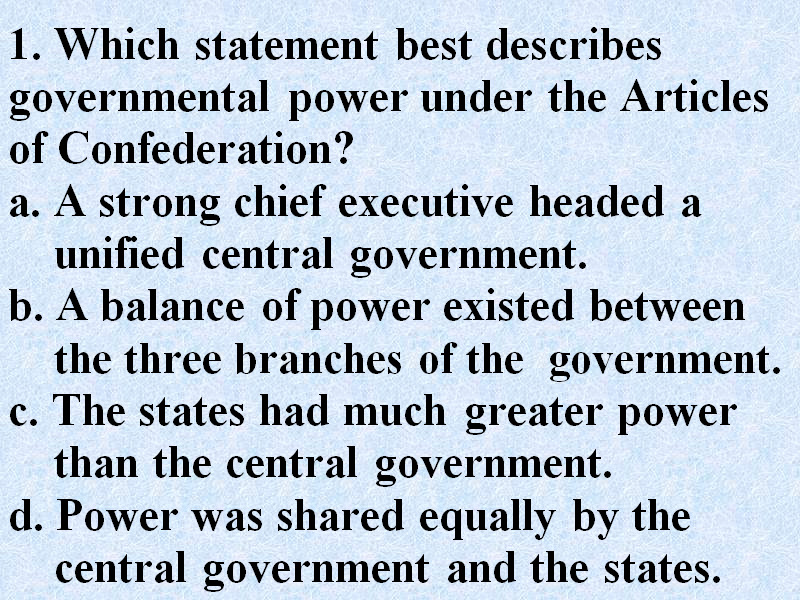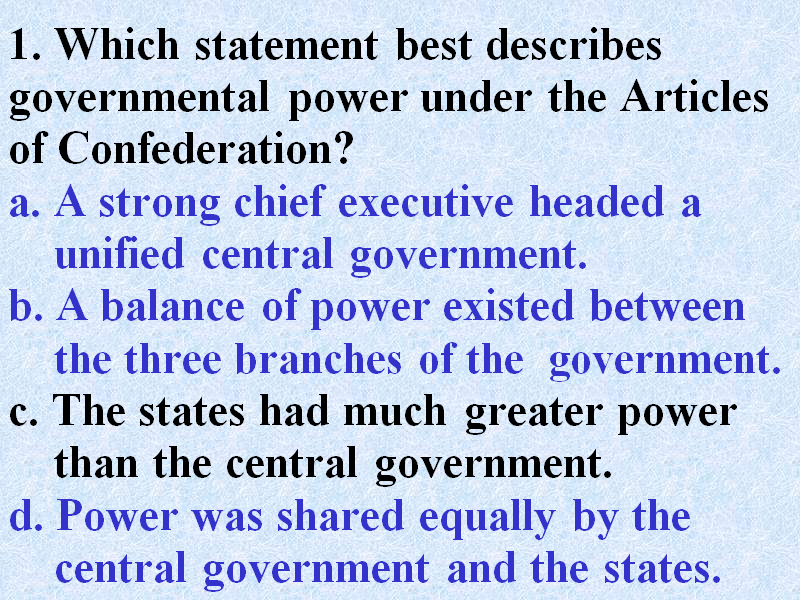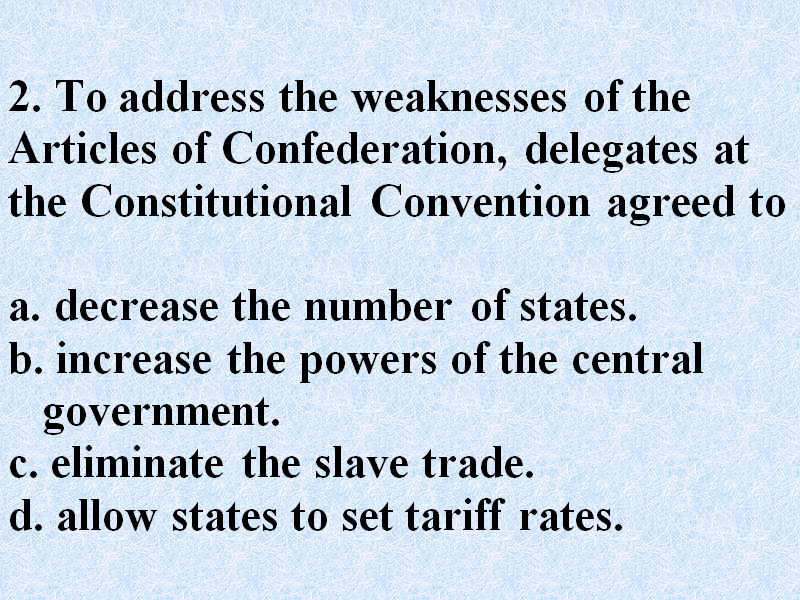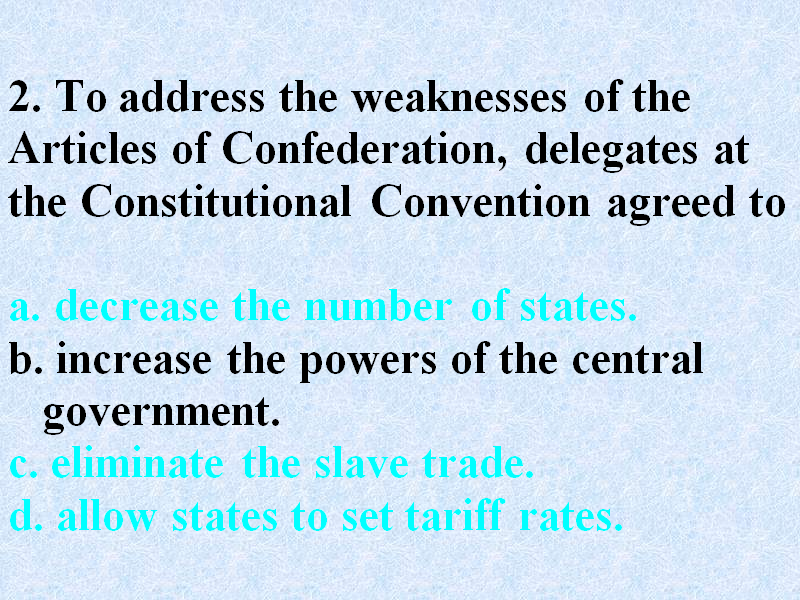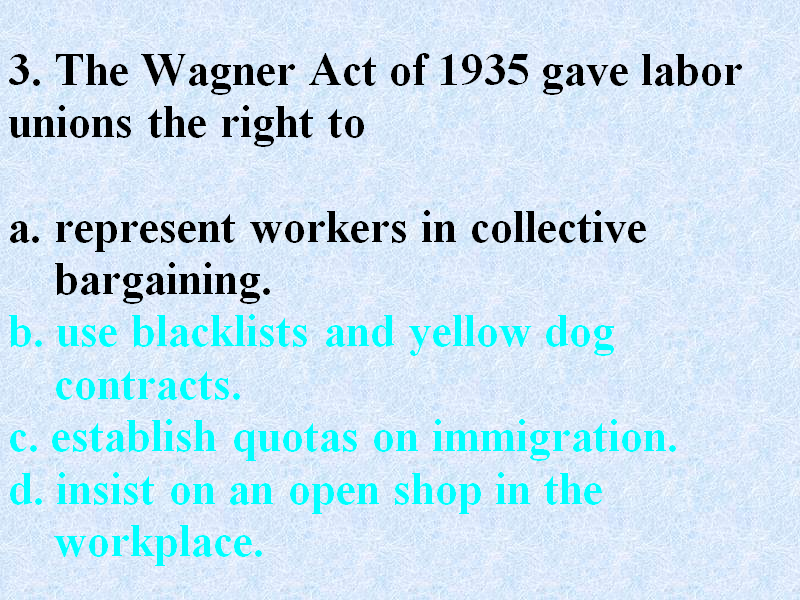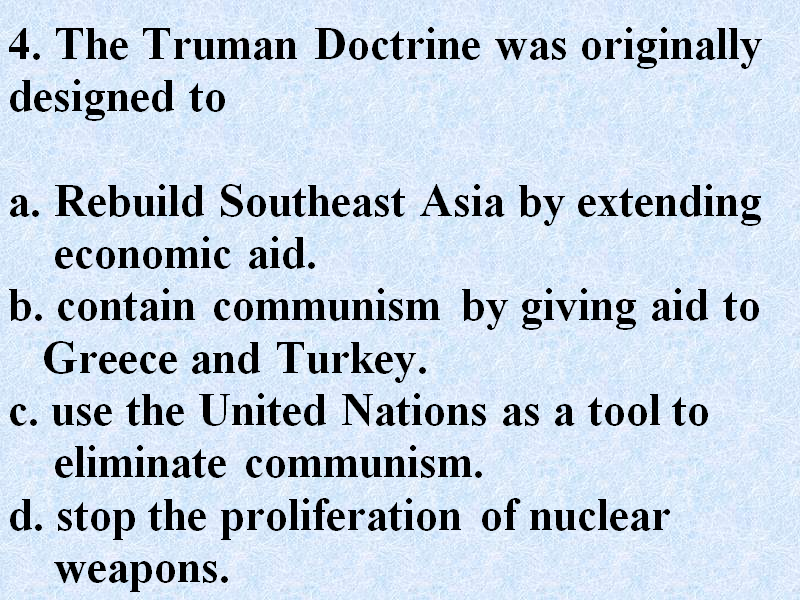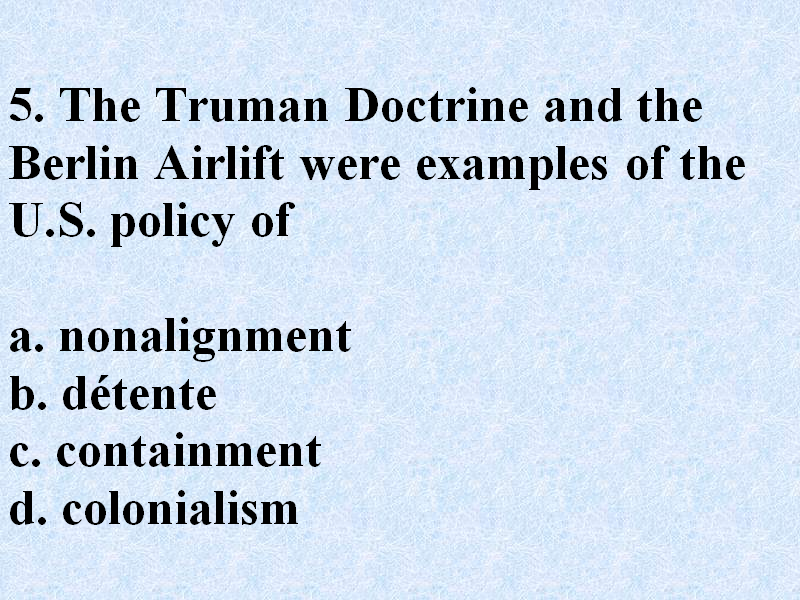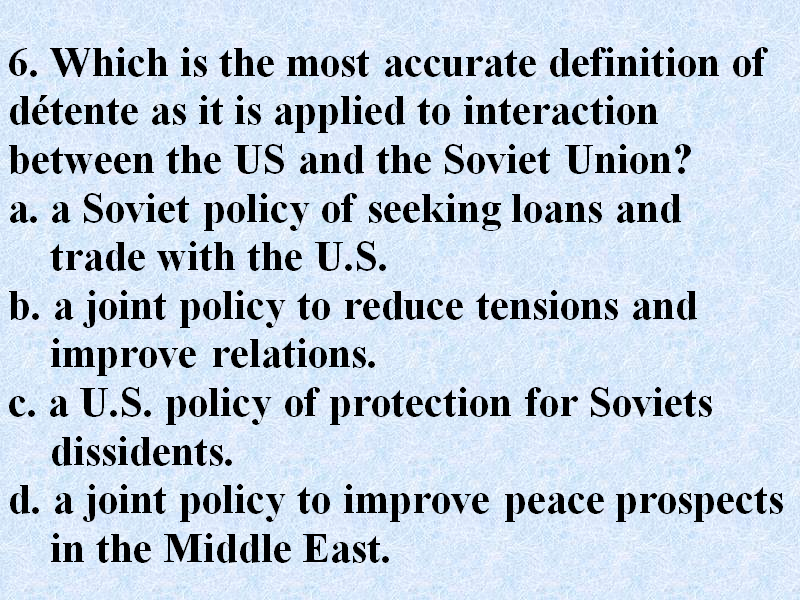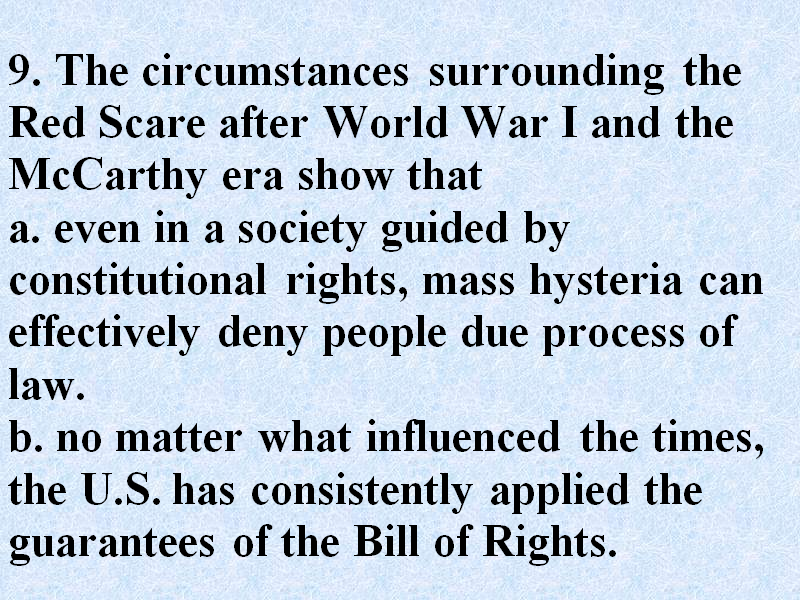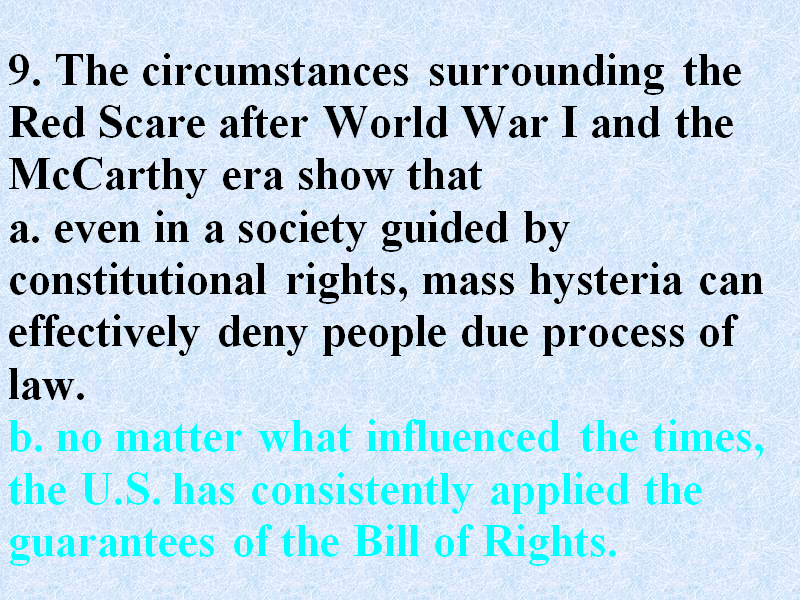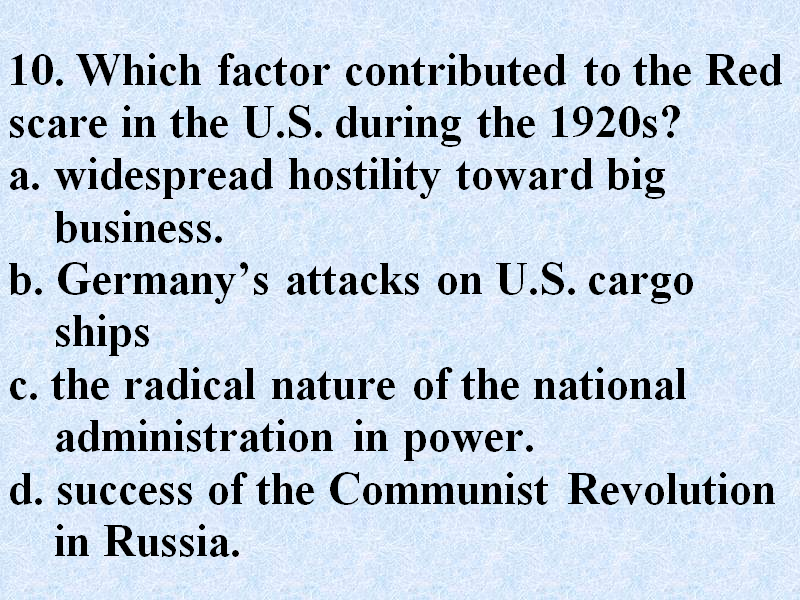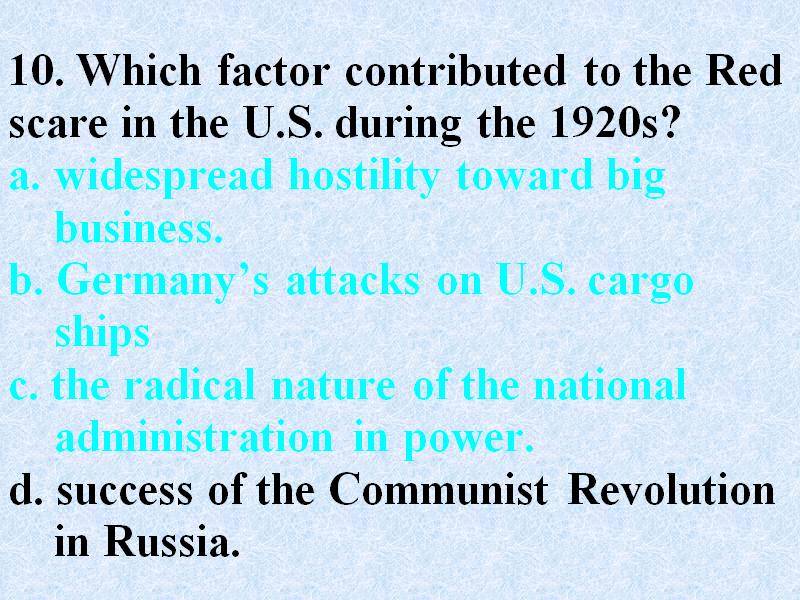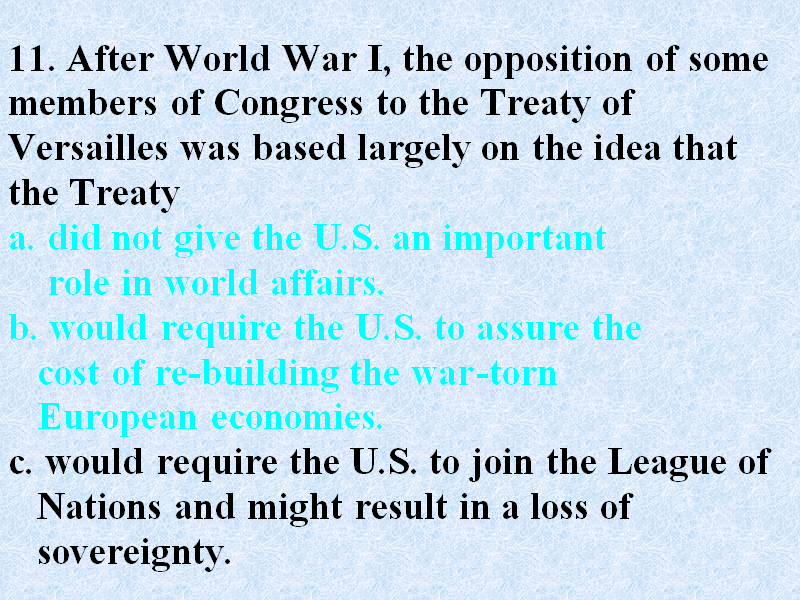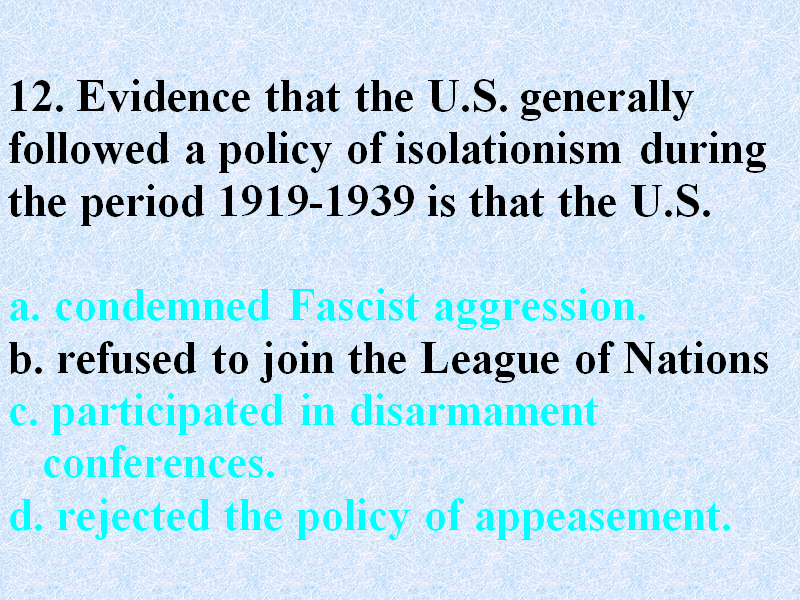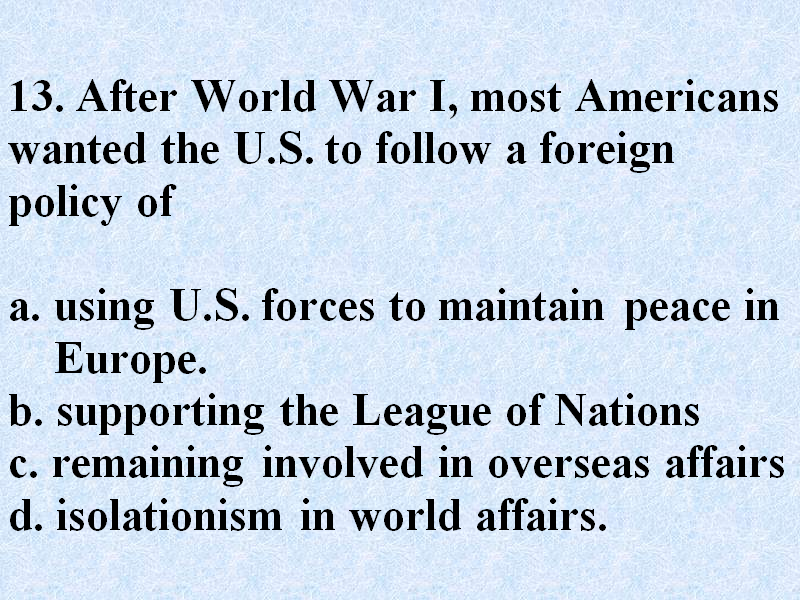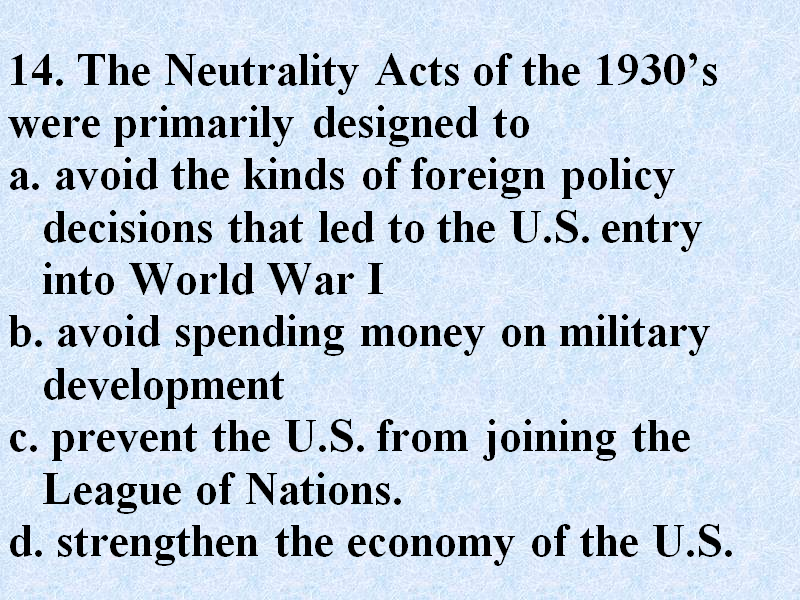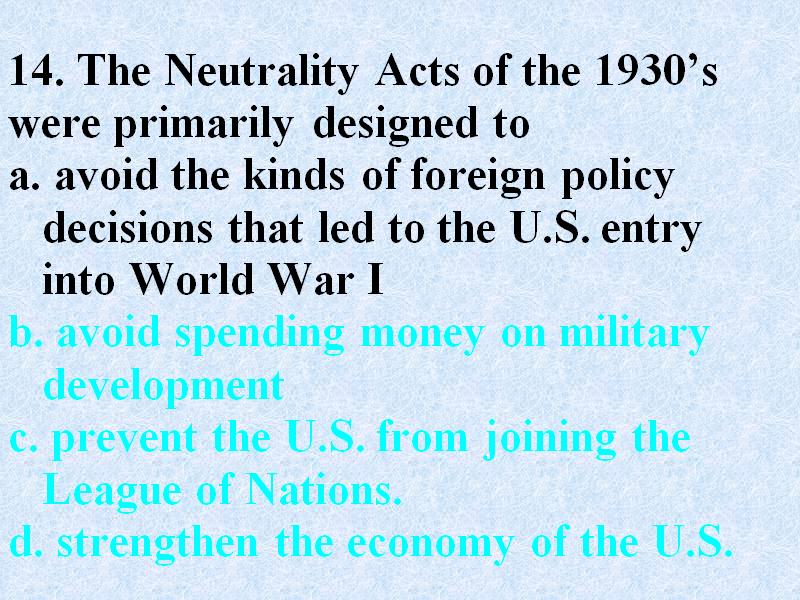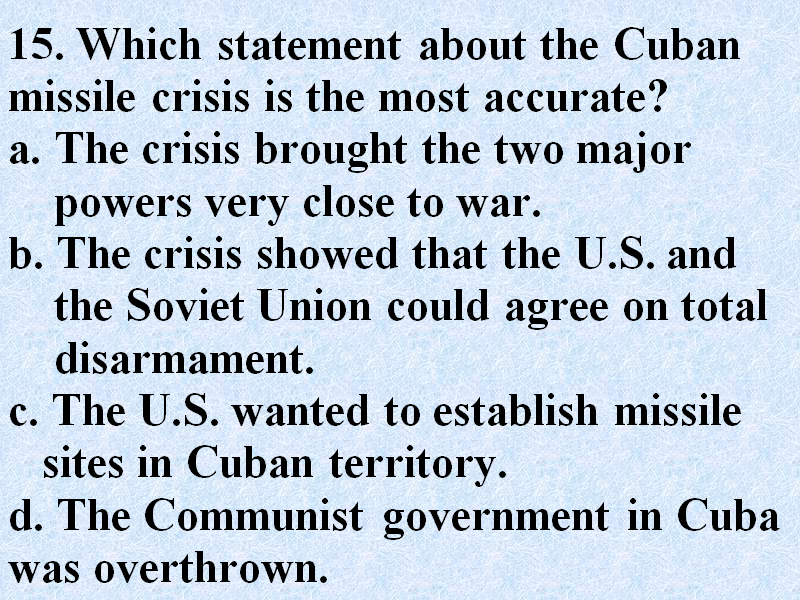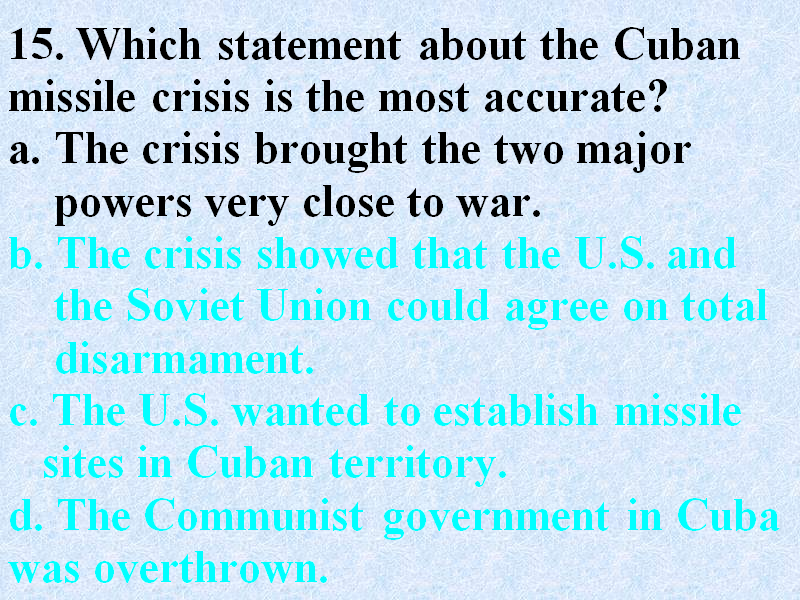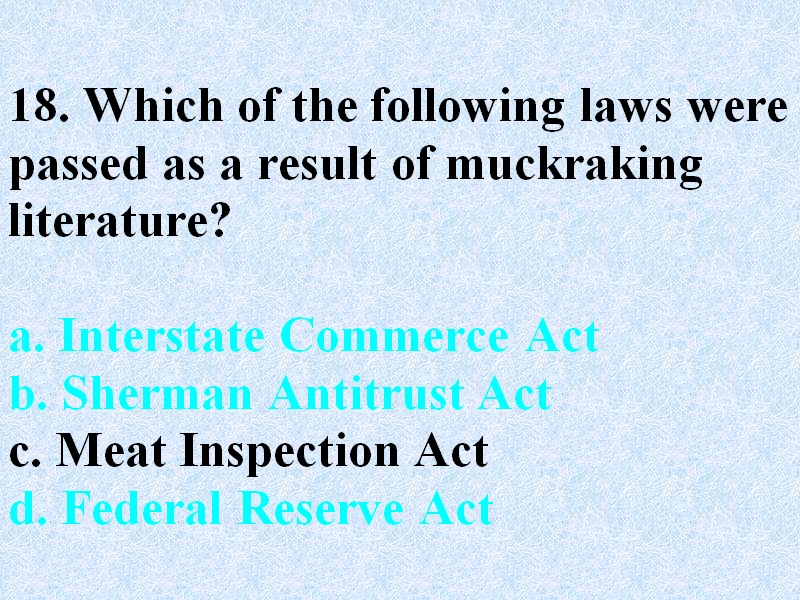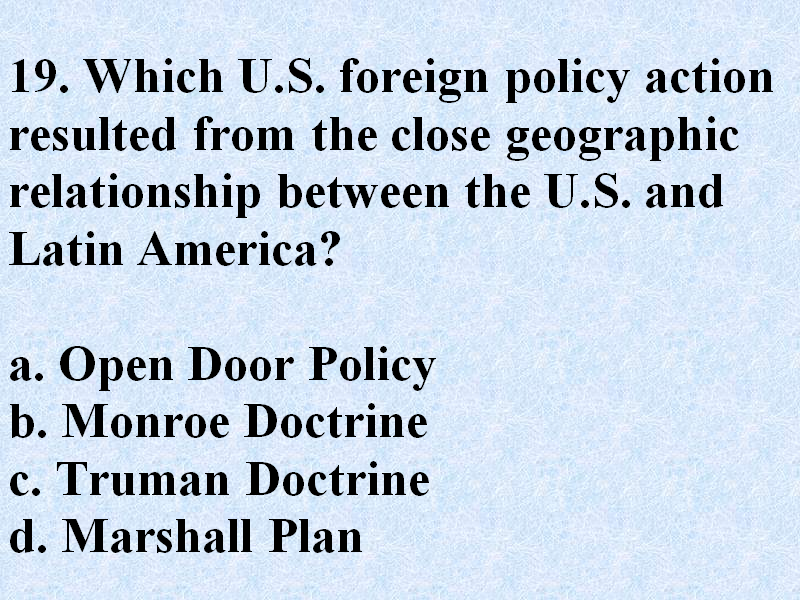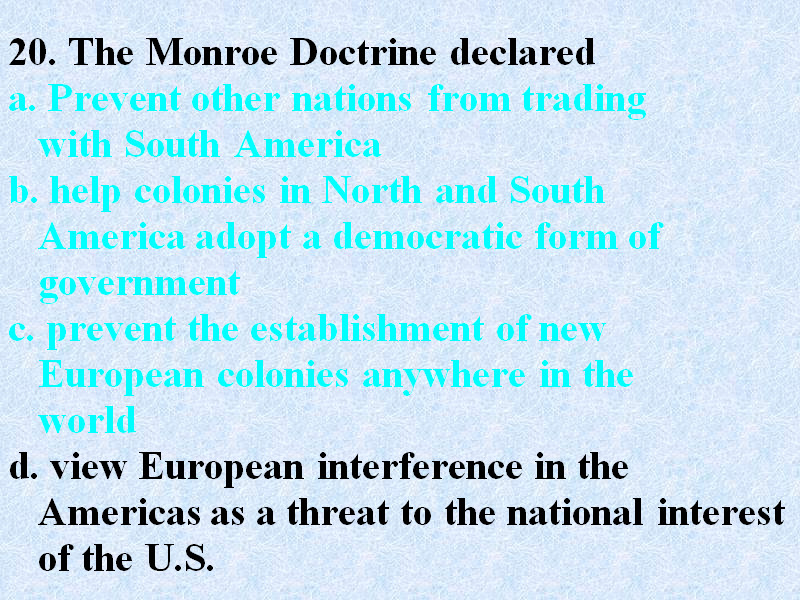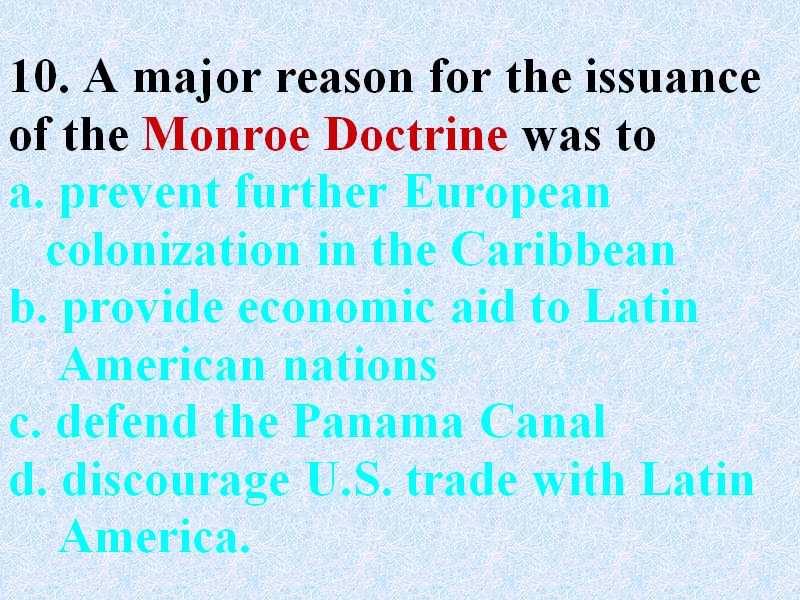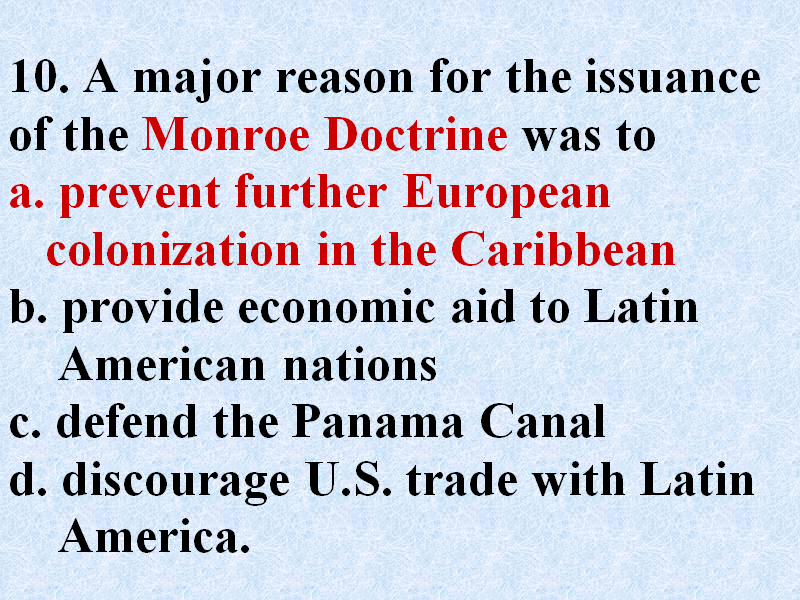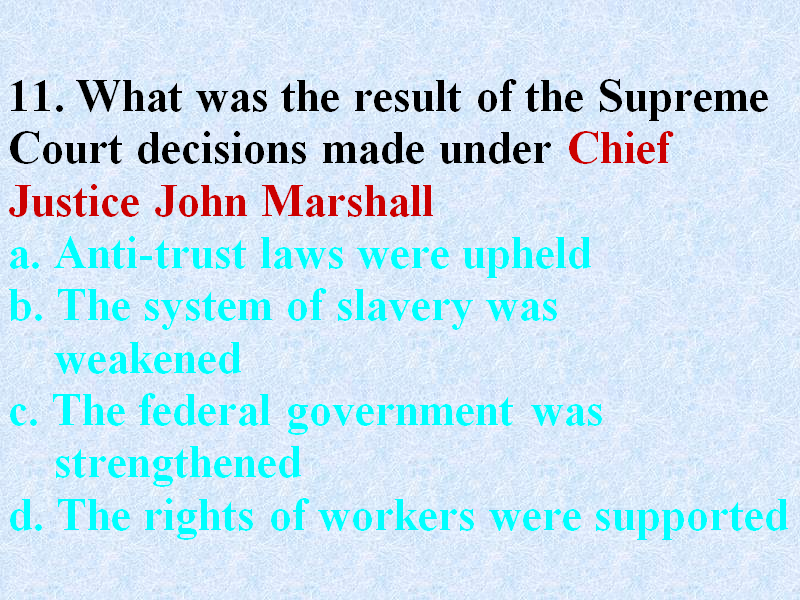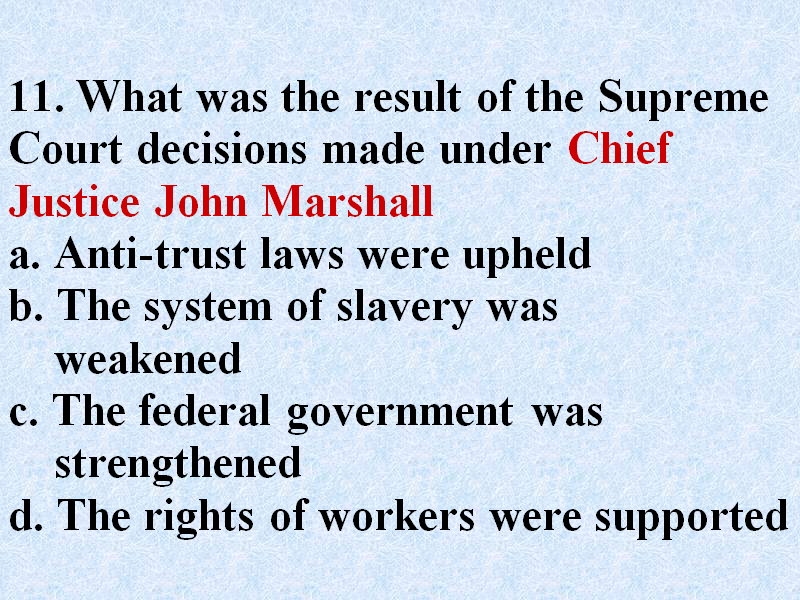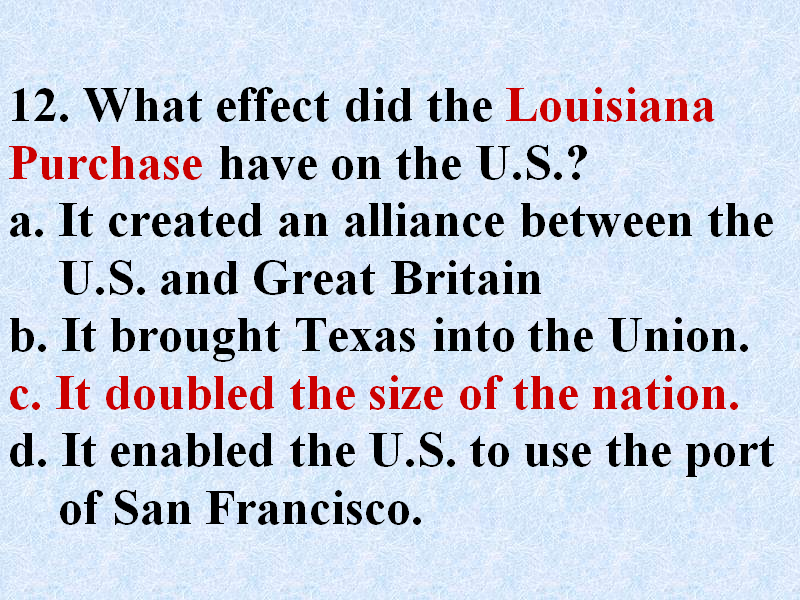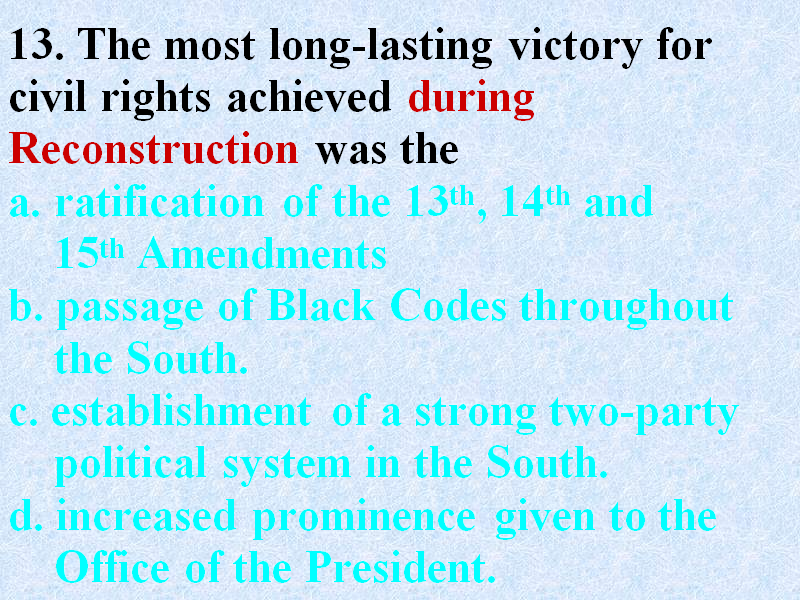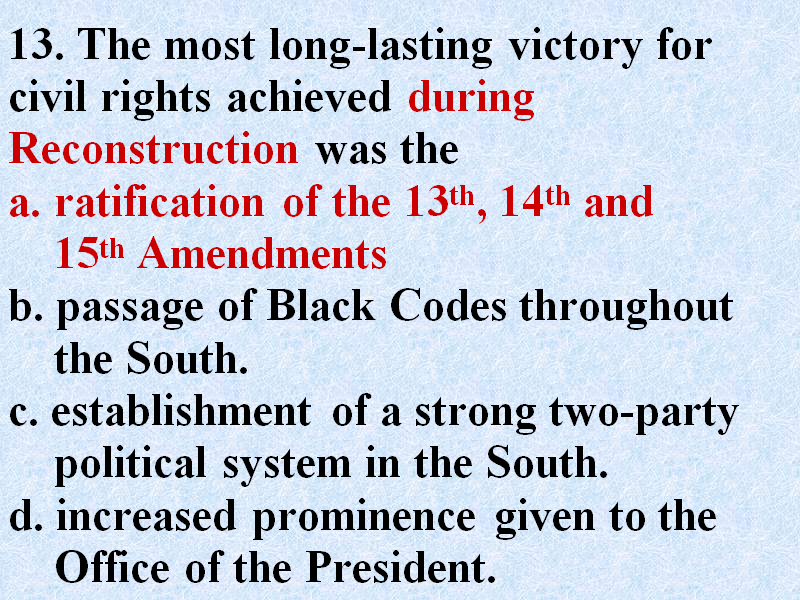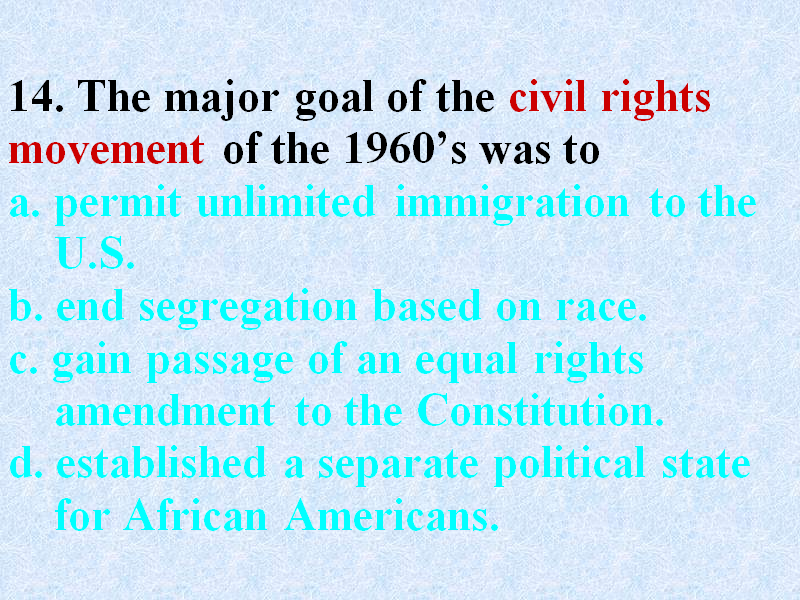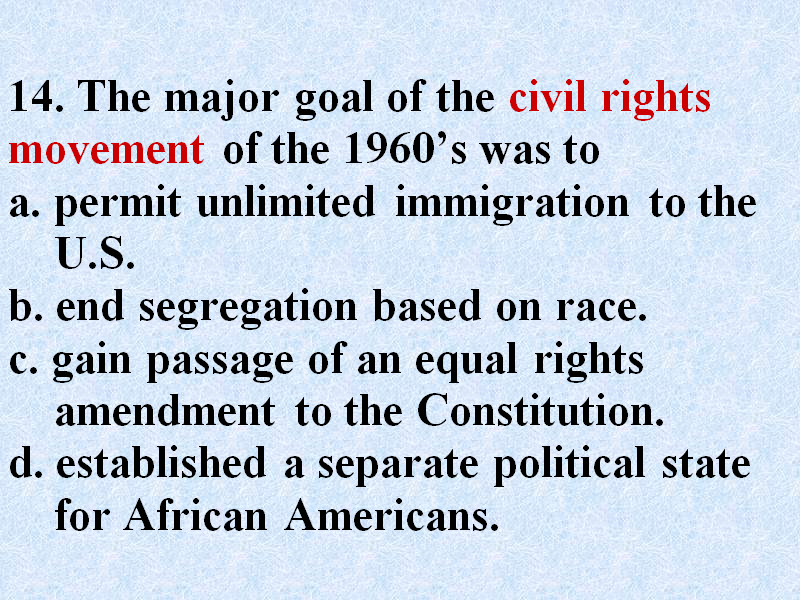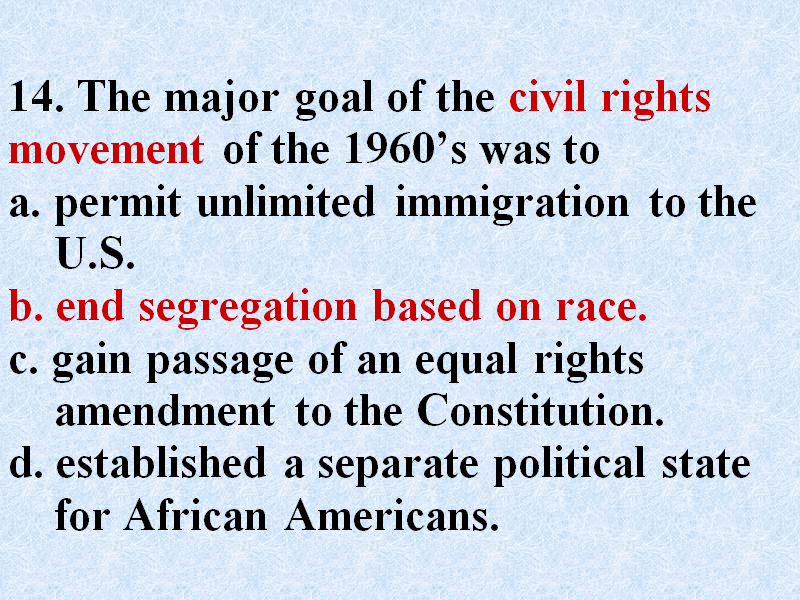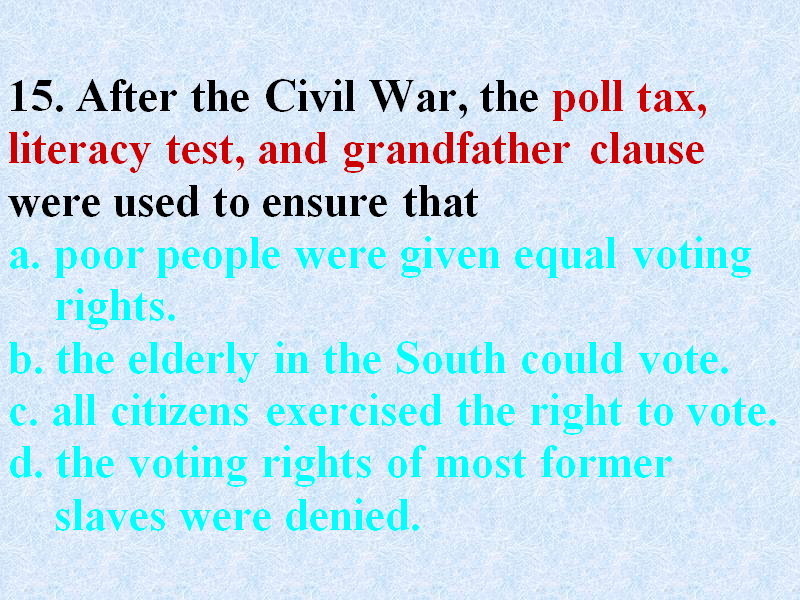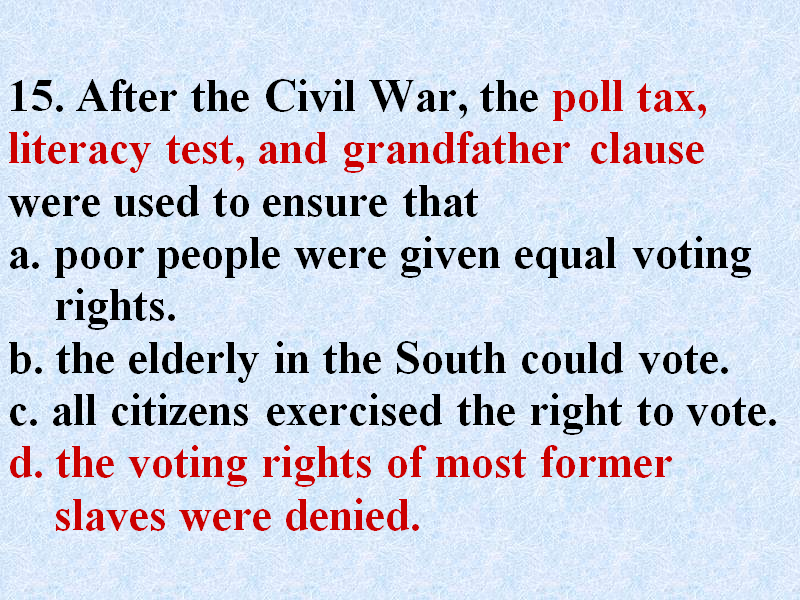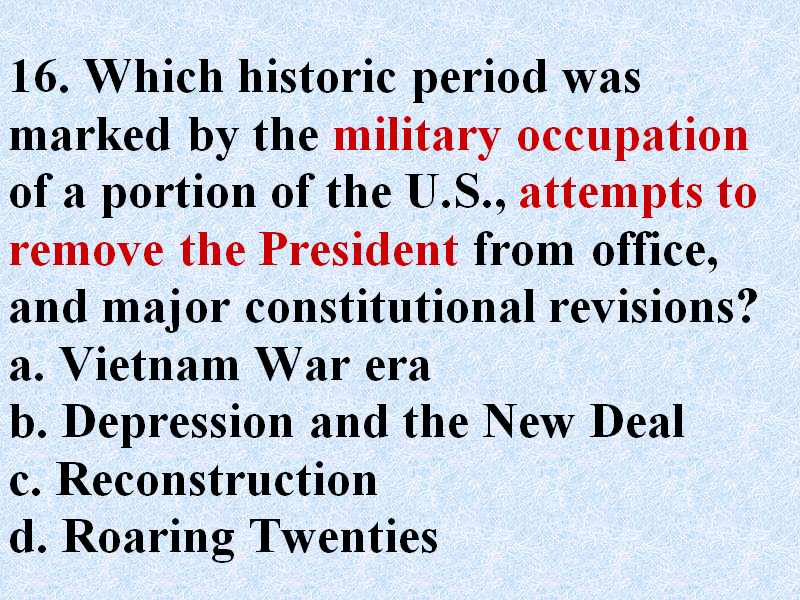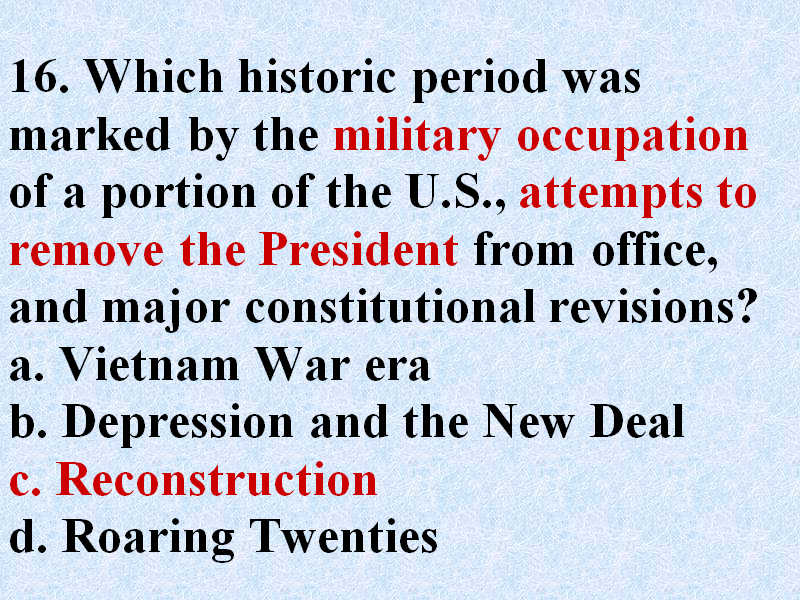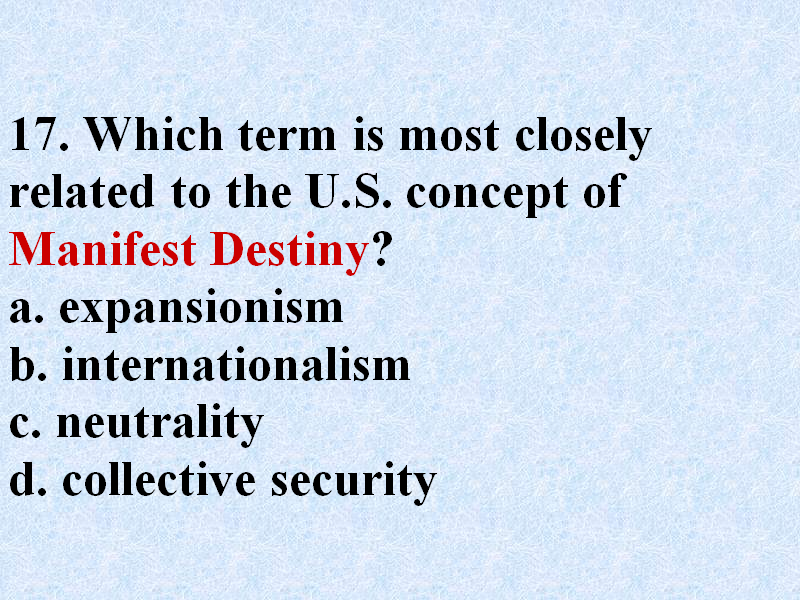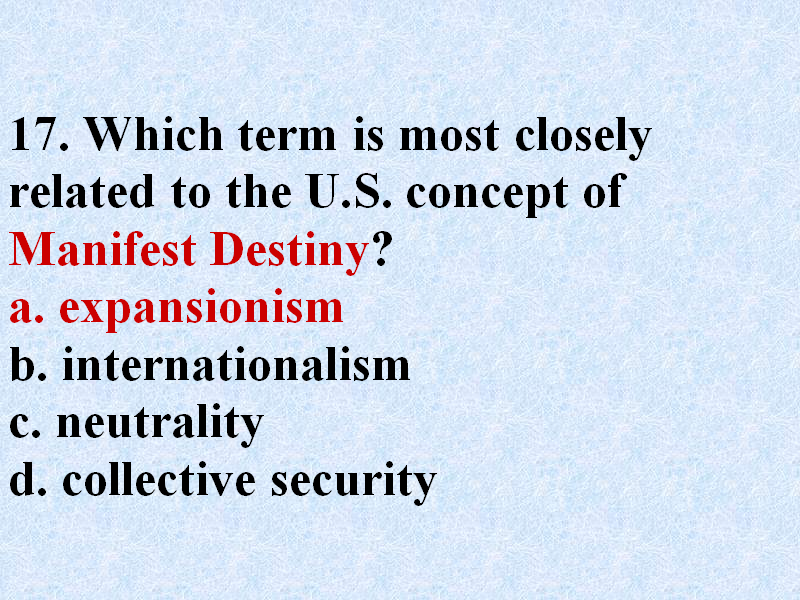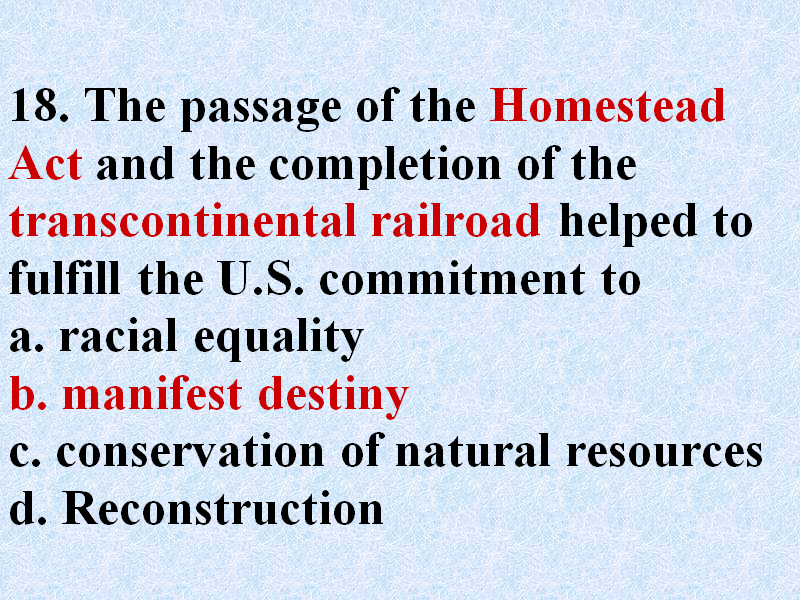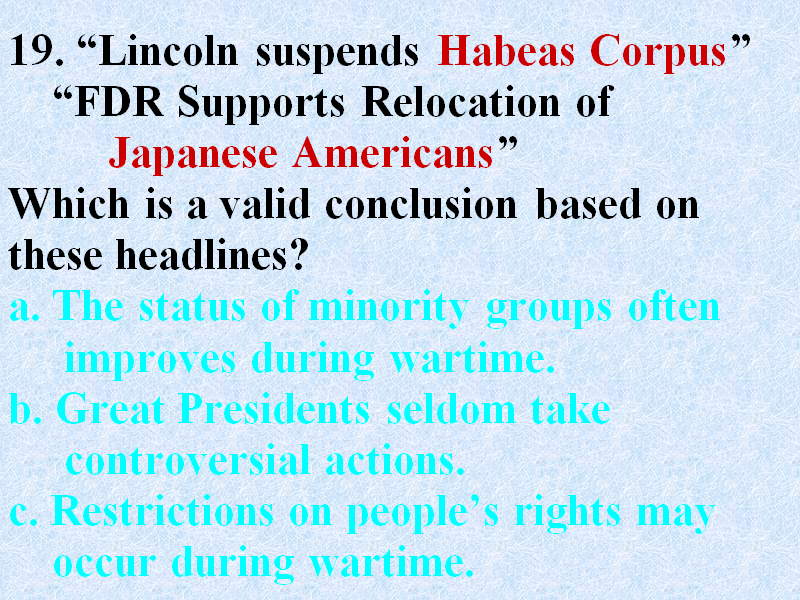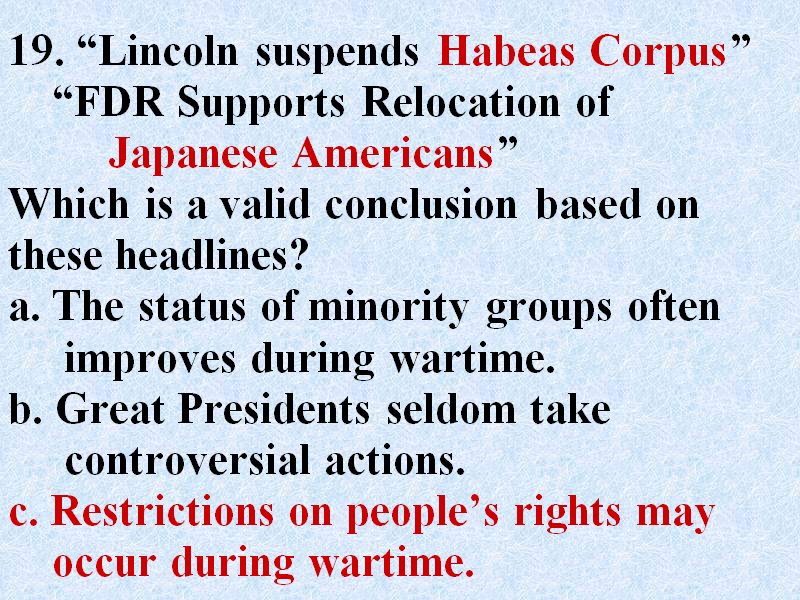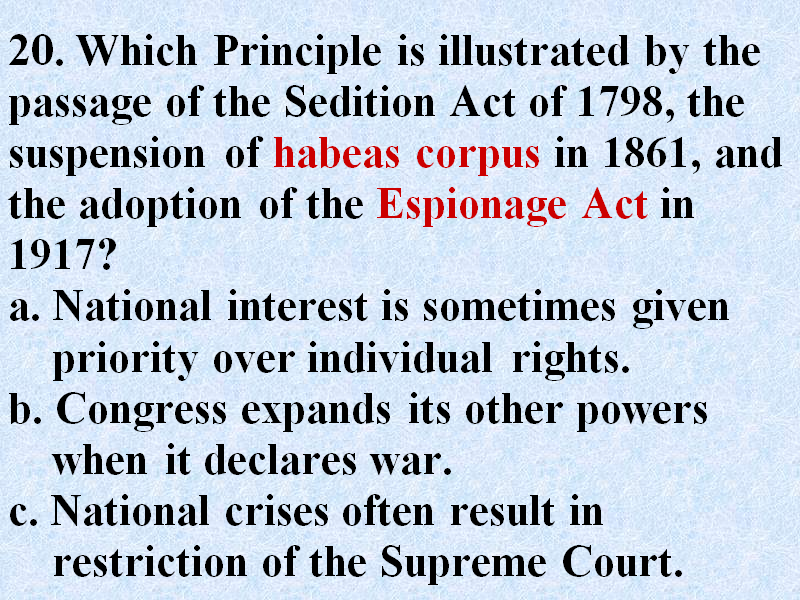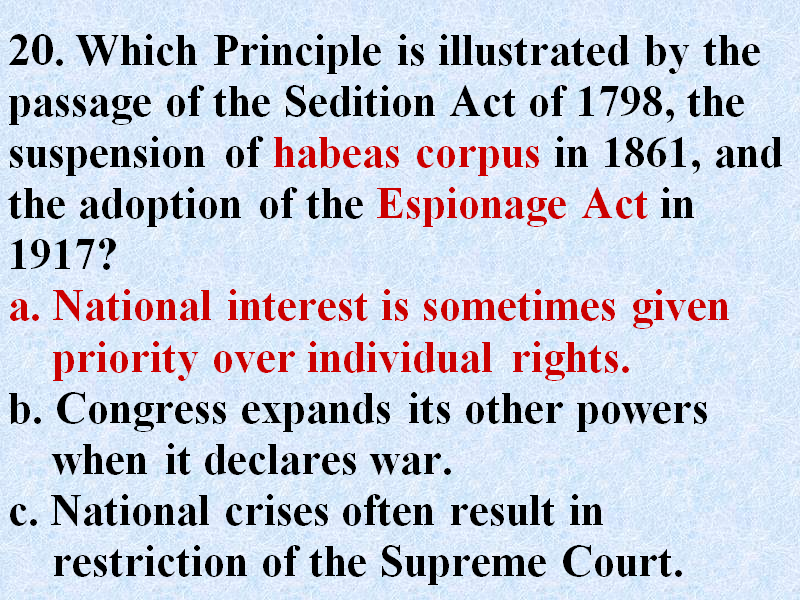| | - 1. Which statement best describes governmental power under the Articles of Confederation?
- 1. Which statement best describes governmental power under the Articles of Confederation?
- 2. To address the weaknesses of the Articles of Confederation, delegates at the Constitutional Convention agreed to
- 2. To address the weaknesses of the Articles of Confederation, delegates at the Constitutional Convention agreed to
- 3. The Wagner Act of 1935 gave labor unions the right to
- 3. The Wagner Act of 1935 gave labor unions the right to
- 4. The Truman Doctrine was originally designed to
- 4. The Truman Doctrine was originally designed to
- 5. The Truman Doctrine and the Berlin Airlift were examples of the U.S. policy of
- 5. The Truman Doctrine and the Berlin Airlift were examples of the U.S. policy of
- 6. Which is the most accurate definition of détente as it is applied to interaction between the US and the Soviet Union?
- 6. Which is the most accurate definition of détente as it is applied to interaction between the US and the Soviet Union?
- 7. The major goal of the U.S. Open Door Policy was to
- 7. The major goal of the U.S. Open Door Policy was to
- 8. The War Powers Act (1973) was passed mainly in response to a concern that Presidents of the U.S.
- 8. The War Powers Act (1973) was passed mainly in response to a concern that Presidents of the U.S.
- 9. The circumstances surrounding the Red Scare after World War I and the McCarthy era show that
- 9. The circumstances surrounding the Red Scare after World War I and the McCarthy era show that
- 10. Which factor contributed to the Red scare in the U.S. during the 1920s?
- 10. Which factor contributed to the Red scare in the U.S. during the 1920s?
- 11. After World War I, the opposition of some members of Congress to the Treaty of Versailles was based largely on the idea that the Treaty
- 11. After World War I, the opposition of some members of Congress to the Treaty of Versailles was based largely on the idea that the Treaty
- 12. Evidence that the U.S. generally followed a policy of isolationism during the period 1919-1939 is that the U.S.
- 12. Evidence that the U.S. generally followed a policy of isolationism during the period 1919-1939 is that the U.S.
- 13. After World War I, most Americans wanted the U.S. to follow a foreign policy of
- 13. After World War I, most Americans wanted the U.S. to follow a foreign policy of
- 14. The Neutrality Acts of the 1930’s were primarily designed to
- 14. The Neutrality Acts of the 1930’s were primarily designed to
- 15. Which statement about the Cuban missile crisis is the most accurate?
- 15. Which statement about the Cuban missile crisis is the most accurate?
- 16. During the early 1960’s, the U.S. had to deal with the building of the Berlin Wall, the Bay of Pigs invasion, and the Cuban missile crisis. Each of these events was a direct result of
- 16. During the early 1960’s, the U.S. had to deal with the building of the Berlin Wall, the Bay of Pigs invasion, and the Cuban missile crisis. Each of these events was a direct result of
- 17. The Harlem Renaissance of the 1920’s can best be described as
- 17. The Harlem Renaissance of the 1920’s can best be described as
- 18. Which of the following laws were passed as a result of muckraking literature?
- 18. Which of the following laws were passed as a result of muckraking literature?
- 19. Which U.S. foreign policy action resulted from the close geographic relationship between the U.S. and Latin America?
- 19. Which U.S. foreign policy action resulted from the close geographic relationship between the U.S. and Latin America?
- 20. The Monroe Doctrine declared
- 20. The Monroe Doctrine declared
- 10. A major reason for the issuance of the Monroe Doctrine was to
- 10. A major reason for the issuance of the Monroe Doctrine was to
- 10. A major reason for the issuance of the Monroe Doctrine was to
- 11. What was the result of the Supreme Court decisions made under Chief Justice John Marshall
- 11. What was the result of the Supreme Court decisions made under Chief Justice John Marshall
- 11. What was the result of the Supreme Court decisions made under Chief Justice John Marshall
- 12. What effect did the Louisiana Purchase have on the U.S.?
- 12. What effect did the Louisiana Purchase have on the U.S.?
- 12. What effect did the Louisiana Purchase have on the U.S.?
- 13. The most long-lasting victory for civil rights achieved during Reconstruction was the
- 13. The most long-lasting victory for civil rights achieved during Reconstruction was the
- 13. The most long-lasting victory for civil rights achieved during Reconstruction was the
- 14. The major goal of the civil rights movement of the 1960’s was to
- 14. The major goal of the civil rights movement of the 1960’s was to
- 14. The major goal of the civil rights movement of the 1960’s was to
- 15. After the Civil War, the poll tax, literacy test, and grandfather clause were used to ensure that
- 15. After the Civil War, the poll tax, literacy test, and grandfather clause were used to ensure that
- 15. After the Civil War, the poll tax, literacy test, and grandfather clause were used to ensure that
- 16. Which historic period was marked by the military occupation of a portion of the U.S., attempts to remove the President from office, and major constitutional revisions?
- 16. Which historic period was marked by the military occupation of a portion of the U.S., attempts to remove the President from office, and major constitutional revisions?
- 16. Which historic period was marked by the military occupation of a portion of the U.S., attempts to remove the President from office, and major constitutional revisions?
- 17. Which term is most closely related to the U.S. concept of Manifest Destiny?
- 17. Which term is most closely related to the U.S. concept of Manifest Destiny?
- 17. Which term is most closely related to the U.S. concept of Manifest Destiny?
- 18. The passage of the Homestead Act and the completion of the transcontinental railroad helped to fulfill the U.S. commitment to
- 18. The passage of the Homestead Act and the completion of the transcontinental railroad helped to fulfill the U.S. commitment to
- 18. The passage of the Homestead Act and the completion of the transcontinental railroad helped to fulfill the U.S. commitment to
- 19. “Lincoln suspends Habeas Corpus”
- 19. “Lincoln suspends Habeas Corpus”
- 19. “Lincoln suspends Habeas Corpus”
- 20. Which Principle is illustrated by the passage of the Sedition Act of 1798, the suspension of habeas corpus in 1861, and the adoption of the Espionage Act in 1917?
- 20. Which Principle is illustrated by the passage of the Sedition Act of 1798, the suspension of habeas corpus in 1861, and the adoption of the Espionage Act in 1917?
- 20. Which Principle is illustrated by the passage of the Sedition Act of 1798, the suspension of habeas corpus in 1861, and the adoption of the Espionage Act in 1917?
- Slide 74
|
